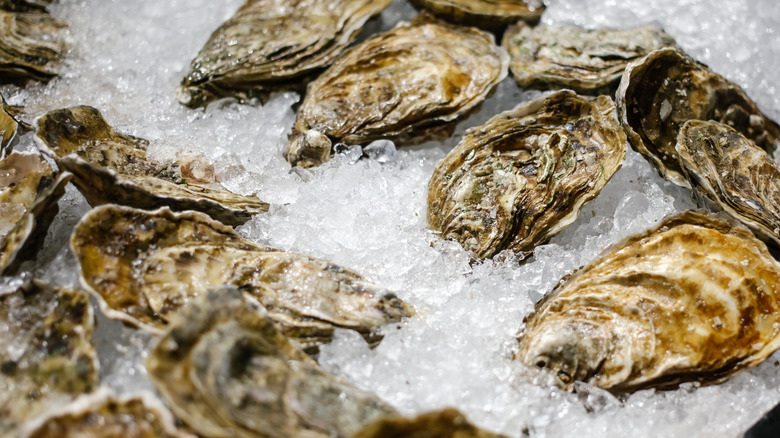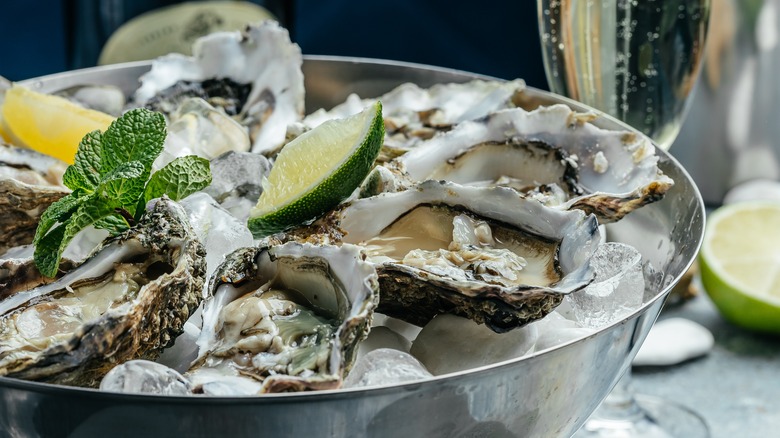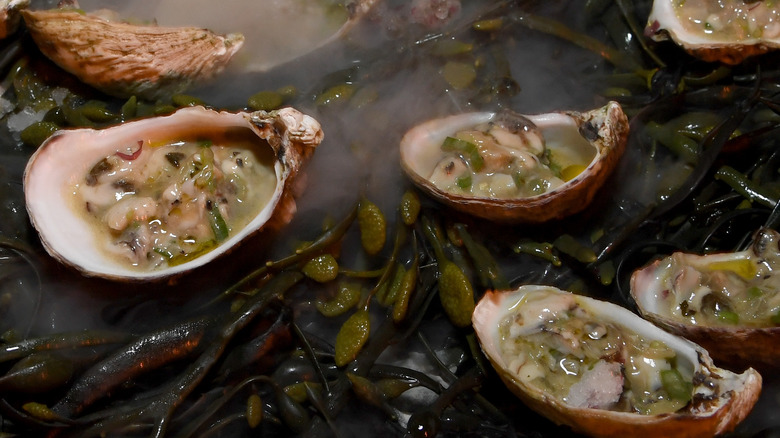The Absolute Best Ways To Keep Oysters Fresh
Oysters have titillated gourmands for our entire history. Few things are more delectable than slurping a freshly shucked oyster bathing in its salty brine. It is as if you are tasting the ocean.
According to Simply Oyster, oysters have been a delicacy since the Roman era. Romans had sourced the native oyster, also known as the European oyster from the icy waters around the United Kingdom. Whether you prefer oysters freshly shucked on the half shell, grilled whole or shucked, smoked, baked à la Rockefeller, or in creamy chowder or holiday stuffing, oysters need to be handled with care to keep them pristine.
Straight-from-the-ocean oysters have never been easier to access with the advent of farm-direct shipping. Consumer demand in many grocery stores and seafood counters keeps oysters in constant supply. No matter where you get them, storing them with freshness and safety in mind is a priority.
First and foremost, ensure the oysters are fresh and alive. Closely inspect the shell and look for cracks, breaks, and openings. Oyster shells should be tightly shut without blemishes, cracks, or chips. Oysters should have a neutral or briny aroma and should never smell strong or pungent. Oysters XO, a direct-to-consumer seafood vendor, suggests knocking two oysters together to tell if they are alive. If one or both sound hollow, the oyster is dead. Throw it away!
If you're purchasing shucked oysters, be sure they are nestled in brine and have a shiny appearance. Oysters should never be cloudy or have a brownish color.
How to store fresh oysters safely
Oysters must be impeccably stored. Oysters are alive inside their rugged shells. Once removed from their natural habitat, their delicate nature is susceptible to rapid deterioration. To prolong their lives outside of the ocean and keep them fresh, strive to keep oysters icy cold.
Simply Oysters & Seafood advises keeping cleaned oysters on a tray, covered with a damp cloth, in the coldest part of the refrigerator, 38 to 45 degrees Fahrenheit. If an oyster opens slightly, that is normal. Knock it gently and it will close. If it doesn't close, throw it away. Oyster shells have a flat side and a rounded bowl side. Keeping the bowl side of the shell down allows the oyster to rest in its natural seawater liquor, prolonging its life. Preserving the delicious liquor is equally important when shucking the oysters before eating.
MasterClass cautions against storing live oysters in fresh or tap water because the minerals, chlorine, and pH will poison them. It is best to distribute the oysters in a single layer on a tray with a little space in between them. Cover with a damp cloth and keep it damp. MasterClass says the oysters can survive for seven days in the refrigerator this way. Vendors like Oysters XO claim that it's best to consume live oysters within a day or two.
Storing, freezing, and serving fresh oysters
Oysters XO cautions against freezing oysters in or out of their shells because freezing will change the delicate texture and flavors of the oyster meat. The mobile oyster catering company says to freeze oysters only if you plan to cook them in a stew, soup, stuffing, or a dish that doesn't require a fresh presentation. MasterClass also recommends using ice packs (versus freezing) for storing live and shucked oysters. This makes sense to avoid poisoning oysters with chlorinated tap water as the ice melts.
Serve freshly shucked oysters and their liquor in their bowl shell on a bed of crushed ice, and consume them within 30 minutes of shucking. In a contributing piece for The New York Times, chef J. Kenji López-Alt says cooking oysters can be the safest way to eat oysters in the summer. For grilled, baked, smoked, or cooked oysters, follow your recipe closely for the best results.


